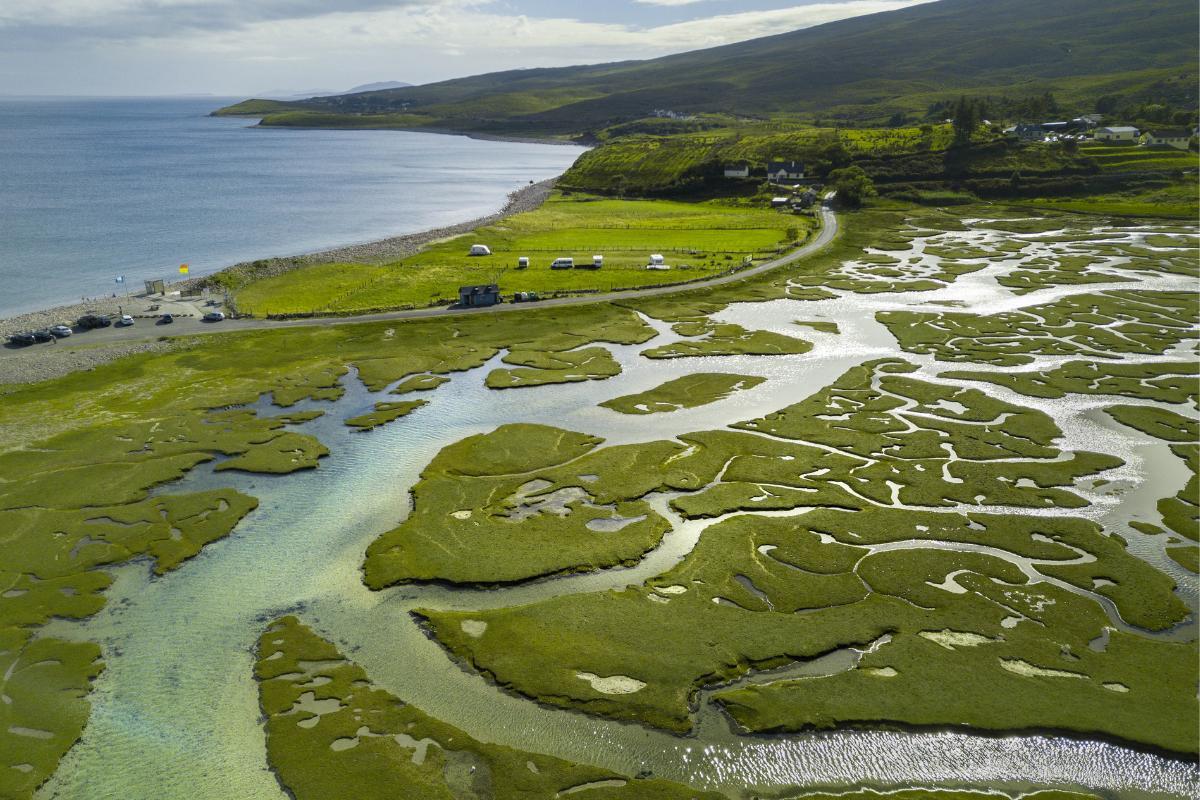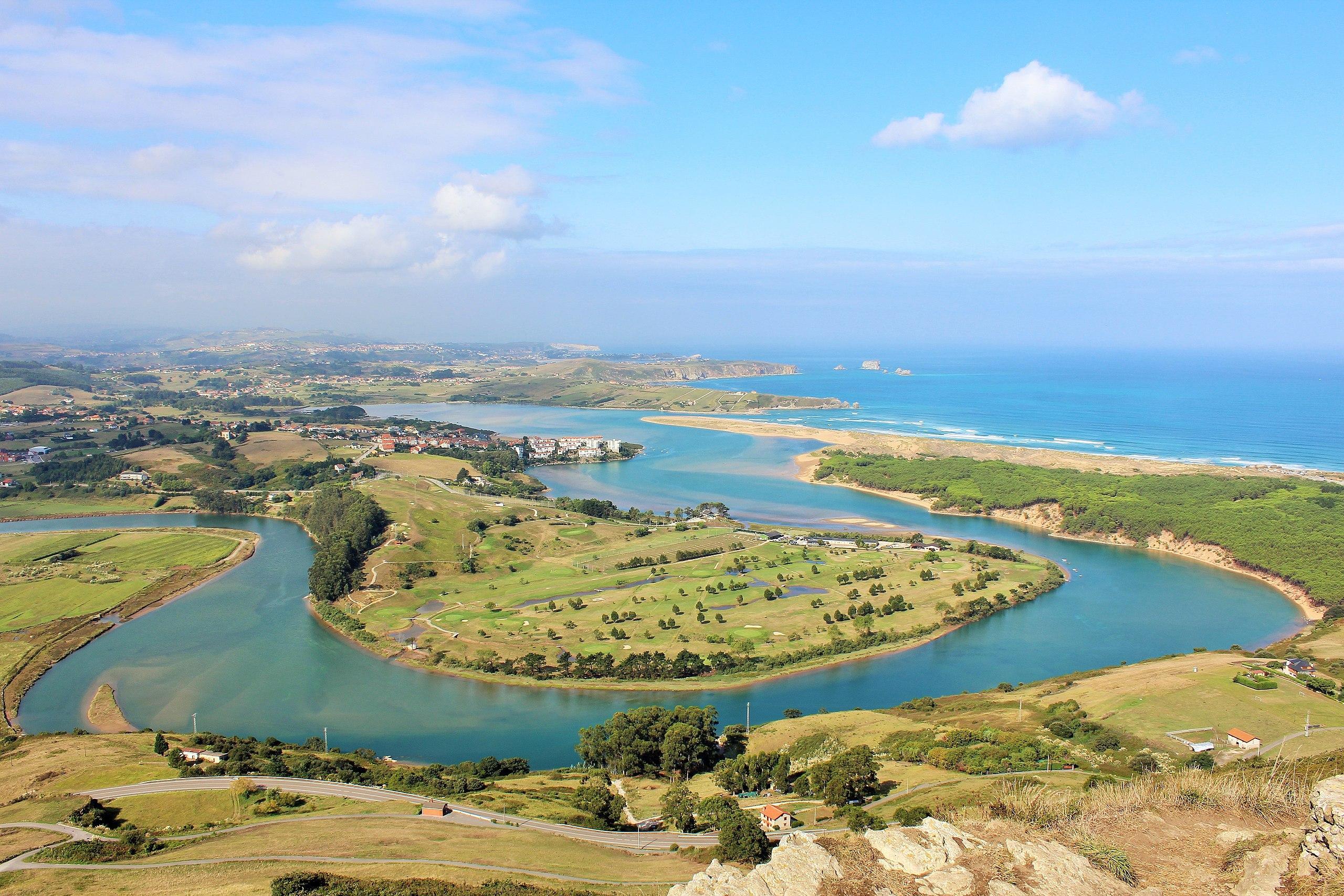The Difference Between a Delta and an Estuary


Among the differences between deltas and estuaries, we can include their shape, the composition of water, the process of sediment deposition and biodiversity. Although they are environments that can often coexist, they are not the same.
A delta is an area where sedimentation predominates, forming a set of islands on the banks of river courses. An estuary is the place where the water from streams and rivers finally flows into the ocean. While we can see this as the main difference between a delta and an estuary, thedailyECO looks into these bodies of water in great detail. This comparison between deltas and estuaries will help you know how to know which is which when you are out in nature.
What is a delta?
A delta is a geographical feature that forms in the vicinity of a river or river course. It occurs due to the sediments which are carried by the river's current. Fluvial dynamics (i.e. the action of water flow and riverbed materials in a river) play a crucial role in this process.
When the water reaches a river lake or ocean, the speed decreases sharply. This sharp movement allows for various sediments to be deposited. Common sediments in rivers include clay, sand and silt. Over time, the incremental accumulation of particles gives rise to the formation of islands. It is these islands of sediment which give deltas their distinctive morphology, commonly characterized by the presence of numerous distributaries. These are the channels of water that branch out across a delta.
These environments have great ecological importance, constituting biological corridors for flora and fauna. In doing so, they form a unique habitat of biodiversity for various species to find shelter and food. For human beings, they are also places of utmost importance. They form transportation and exchange routes and activities that stimulate the economy such as fishing, livestock, agriculture and industrial development.
Some examples of important river deltas across the world include:
- Mississippi Delta
- Nile Delta
- Inner Niger Delta
- Amazon Delta
- Paraná Delta
- Orinoco Delta
- Volga Delta
- Danube Delta
- Niger Delta
You can learn more about features of rivers with our article which explains what is a meander?

What is an estuary?
An estuary is a transitional ecosystem that is partially confined in coastal areas. It occurs when marine and riverine environments interact. When water from large rivers flows into the sea, it mixes with salt water to form an estuary.
The shape and extension of an estuary is modified by erosive processes and the deposition of sediments. The effects generated by the rise and fall of sea level is also a contributing factor. Their high salinity, productivity and low thermal amplitude give these systems unique characteristics. Such characteristics support the life of a large number of euryhaline species (i.e. those able to survive in high-saline environments) throughout much of their life cycle.
Various birds, fish, mollusks, reptiles and other organisms of the animal kingdom depend on estuarine habitats to live, feed, reproduce and shelter. Likewise, estuaries are very important for the economic growth of many societies, since they generate employment with fishing, navigation, tourism and other industries.
Some examples of important estuaries include:
- Estuary of the Río de la Plata (Argentina)
- Estuary of the Massa River, (Morocco)
- Klamath River Estuary (United States)
- Estuary of the Tagus River (Portugal)
Learn more about this geographical feature with our article on what is an estuary?

Differences between deltas and estuaries
We have provided definitions, characteristics and examples of deltas and estuaries separately. We can now look at a comparison to determine the following differences between a delta and an estuary:
- Shape: deltas usually have a triangular or trapezoidal shape, forming a series of distributaries or channels. Estuaries usually have only one widened, funnel-shaped channel that empties into the sea.
- Water composition: deltas are formed mainly in freshwater environments, while a mixe between fresh and salt water occurs in estuaries. When the currents are strong, the salinity is homogeneous, but when this does not happen it can stratify, presenting a layer of fresh water on the surface and a dense, salty layer at the bottom.
- Sediment deposition: deltas are characterized by a high deposition of sediments including clay, silt and sand. When this happens, islands and lands form in the vicinity of bodies of water. In estuaries, sedimentation processes are less important. The debris it transports is fine and scarce. When it reaches the sea, it flocculates and settles on the bottom, but it is not in sufficient quantity to form islands as occurs in deltas. However, alluvial plains can form, giving rise to marshes dominated by grasses and small shrubs. Learn more about what is a marshland in our related article.
- Biodiversity: the vast majority of the organisms that live in the delta are adapted to the hydrological regime of the water courses. The animal and plant species that develop between the terrestrial and freshwater environments find shelter, food and spaces conducive to reproduction. In comparison, the inhabitants of the estuary are predominantly marine. An estuary serves as a feeding and breeding site for many marine organisms, especially fish and mollusks.
Now that you know the difference between deltas and estuaries, you may also be interested in these other articles on what is brackish water and are there saltwater lakes?
If you want to read similar articles to The Difference Between a Delta and an Estuary, we recommend you visit our Facts about nature category.
- Boschi, E. E. (Ed.). Historical background of explorations at sea and environmental characteristics, National Institute of Fisheries Research and Development (INIDEP): Mar del Plata, 1997, p. 133-161. (The Argentine Sea and its Fishing Resources, 1).
- Marcolini, G.P., & Parker, S. (1992). Geomorphology of the Paraná Delta and its extension towards the Río de la Plata. Magazine of the Argentine Geological Association, 47(2), 243-249.
- Smith, T.M., & Smith, R.L. (2007). Ecology.







